I was originally going to start this review with a short, punchy opener like “Halo Infinite is the best Halo since Halo 3!” After a little thought, though, I’ve chosen to take a rather more measured approach, not least because saying that would make me sound like I write for IGN or something. Saying “Halo Infinite is the best Halo since Halo 3” is not inaccurate, but it’s also a somewhat nonsensical statement for two reasons. One is that it makes the same mistake as 343 and Bungie did of assuming that everyone’s actually played the other Halo games — and their spin-offs, and read their tie-in novels, and their comics, and probably watched the upcoming live-action TV show to boot. If you don’t have the context, then that could mean almost anything. And the other reason is that even if you do have the context — if you have played every single Halo game, as I rather unfortunately have — you’ll know that this is potentially an extremely powerful curse as every Halo game after 3 has been varying shades of crap1.
This perhaps makes me not the best person to review Halo Infinite — not because I’m particularly enamoured of developer 343 Industries or the Halo series (certainly not the latter half of it, anyway), but for precisely the opposite reason: I think those games are so bad that Halo Infinite has an extremely low bar to clear in order for me to consider it a success. Clear it it just about does, though, which is still a tad surprising to me given Infinite’s well-publicised development problems. After five years spent trying to figure out how to winch the story back up from the pit they drove it into at the end of Halo 5, 343 showed off a gameplay demo of Infinite back in 2020 that was widely derided and led to two things. One of those things was unambiguously good: they got a full additional year to work on the game and polish up some of the more obviously shonky gameplay elements, and I think it’s thanks to that extra year in the oven that Halo Infinite works at all. But the other I’m less sure about, because the bad demo indirectly led to a new Creative Lead being brought on board2, and I’m fairly sure this change in direction is part of the reason why Halo Infinite feels like two completely separate games that have been bolted together into a single misshapen product.
Now, one of those games is actually quite good, and, defying my increasingly allergic reaction to the concept as time goes on, it’s turned out to be the one set in the open world. Infinite making Halo properly open world is supposed to be the big “innovation” it brings to the series, but I’m not as opposed to the idea of Halo going open world than I might be with other long-standing franchises; ever since that first trailer all the way back in 1999 it’s been obvious that that was the original vision for Halo, but the technology just wasn’t there to support it yet. I’m less wild about suiting up as Master Chief yet again just to run around an open world map hoovering up all of the map markers, but fortunately Infinite’s open world isn’t about that. Or at least, it’s not solely about that.
Halo Infinite’s plot is awful, and I’ll give it a kicking at the end of the review when I tackle the actual campaign. The gist of it, though, is that Master Chief has ended up on the surface of yet another giant ringworld called Zeta Halo. Unlike the other rings, this one has had a vast hole blasted out of it by some cataclysmic event and the ring is in the process of repairing itself, with huge chunks of the circumference still gaping voids open to space. This damaged portion of the ring also happens to be where Halo Infinite’s open world is set, since it lets 343 gate player progress by splitting the world into discrete regions separated by vast chasms that are impassable until either you get lifted over them by some plot occurrence, or you unlock the Wasp VTOL towards the end of the game. Zeta Halo is currently under the control of a bunch of Covenant knockoffs called the Banished, whose major gimmick is that they have red theming instead of purple theming and much less interesting architecture, and are otherwise identical in every way. Your job as Master Chief is to hike around the ring “liberating” UNSC bases and rallying human survivors to fight the Banished, and you do this by…
…running around the map hoovering up all of the map markers. What can I say, Halo Infinite is an open world game in 2021 and there’s apparently only one way we can do these, for all that Breath of the Wild demonstrated people could cope with a much more freeform alternative. The map markers are all of the same things that you can find in any open world game on the market — seven forts to attack, fifteen high value targets to assassinate, fifty skill point caches to find etc. etc. — but the interesting thing about Halo Infinite is how it approaches the map markers that aren’t collectibles. Or perhaps it wasn’t Infinite’s intention, but it was definitely how I ended up approaching its map markers: as an excuse for a series of interesting fights.
The fights against the Covenant have always been the most interesting part of Halo to me. Twenty years later and I’m still in awe of how good the combat in the original Halo feels; the different enemy types and the relatively sophisticated AI meant that Bungie could get away with just inserting enemy squads via dropship and letting the combat encounters play out from there in a natural, emergent way. This reached a proper art form in Halo 3, with the enemy roster at its most vibrant and some excellent weapons and vehicles that weren’t the Warthog; I replayed all of the Halo games last year via the Master Chief Collection and it struck me how ambitious Halo 3 was with this, and how subsequent games all rowed back from it substantially by becoming far more straitjacketed, proscriptive and CoD-like in their level and encounter design. And the reason I’m willing to forgive Halo Infinite quite a lot — and trust me, there’s a lot to forgive — is because the open world finally starts things moving back in the direction of these emergent fights again.
Each map marker sets up a combat encounter, or a series of combat encounters, with slightly different scenarios and enemy mixes and starting positions, but aside from dropship spawns none of the action is scripted at all. The Covenant and any supporting UNSC marines that happen to be present will fight it out autonomously; you can watch these battles from afar without intervening if you want, although the marines will get absolutely leathered unless they have special weapons. It’s far more interesting to get stuck in yourself, though, and the approach you can take to each one is truly freeform. You can hang back and snipe from afar, you can get up close and personal with a shotgun and the new grappling hook, you can bring in a Wasp and just slaughter everything from the sky, or even (and this is very much my favourite) spawn a Razorback at a FOB, load it up with five marines and then drive your little clown car straight into the action where the marines will add to the sheer chaos unfolding in front of your eyes. Because the Banished are a copy of the Covenant they have all of the tried-and-tested enemy types from other Halo games — Grunts, Elites, Jackals, Brutes, all with different weapons and loadouts, and all of whom can leap into nearby empty vehicles or turrets to try and take you out. The marine and enemy AI was one of the things that was polished up during the extra year of development, and it’s really paid off by ensuring every single map marker provides a fight that’s at least as good as the ones from the second level of Halo: Combat Evolved.
This is why I’m a bit more positive about Halo Infinite than I might otherwise be given the giant-sized “But…” that just visible on the horizon of this review: “interesting fights” are all I ever wanted from the series, and it’s nuts that I’ve had to wait over a decade for a Halo game to give me something I recognise as Halo combat, but Infinite gives me a full open world’s worth. The actual rewards you get from clearing the map markers are minor — in the case of the assassination missions they’re practically worthless — but I did them all anyway because I knew each one would be a 1-3 minute snippet of what Halo does best. If the open world has a flaw, it’s that it doesn’t have enough of these fights; Infinite’s map is considerably smaller than your typical Ubisoft open world game, and while I definitely don’t want another game on the scale of Valhalla I would like one that took me a bit more than nine hours to fully strip clean3.
I’m also a big fan of the approach Infinite has taken towards its actual combat mechanics. You may have noticed the dreaded words “grappling hook” just now, which is the other major “innovation” Infinite adds to the Halo formula; it seems to me that making your game open world and giving the main character a grappling hook fit more into the “chasing market trends” category than they do innovation, but just as Infinite manages to make the open world not suck, it has also put a surprising amount of thought into the grappling hook. First off, and to Infinite’s considerable credit, it does not fuck about with it in any way; having decided to make the grappling hook a core part of Master Chief’s equipment and a game-defining piece of mobility tech, it has the good sense to start you off with the thing attached to your armour from the very first moment of the game. Chief’s grappling hook feels almost exactly like the one I saw six months ago in Necromunda; it only has a single charge, and the range is slightly shorter, and the base recharge time is slightly longer, but it’s otherwise identical, and that’s a good thing because Necromunda’s grappling hook was the first time I’ve seen an FPS do a grappling hook right. Infinite is the second, and just like Necromunda it lets you upgrade the grappling hook to the point where it is ludicrously broken — and ludicrously fun. The base grappling hook lets you grapple to enemies so that you can punch them, but you can add an electric charge to it so that it’ll stun anything it touches, and then a shockwave attack that lets Master Chief hit the target point with the force of a small nuclear weapon. You can also fix that recharge time to be short enough that Master Chief can chain grapples to properly Spiderman his way up cliffs, firing it off again long before he’s lost his height and momentum from the first grapple, and when combined with the now genre-standard mantling behaviour the grappling movement around Halo Infinite’s open world feels very smooth.
One of the interesting things about Infinite, though, is that it doesn’t enforce the use of this shiny new button it’s given you. There’s a few bits in the first level of the campaign where you need to use it, but precious few others, and nothing that’s on the critical path in the open world requires you to use the grappling hook. Getting around the ring is going to be unnecessarily difficult if you don’t, but you can just play Halo Infinite with guns and grenades if you want. The reason I find this approach interesting is that it stands in stark contrast to what I’ve come to consider a design antipattern in FPSes: Doom Eternal, which introduced a bunch of new buttons and abilities and then forced you to use them by crippling the basic combat gameplay4 to the point that it was pretty much unplayable if you didn’t. Halo Infinite’s approach is much more player-positive; it too adds a lot of new buttons — the grappling hook, a threat sensor ability that will highlight all enemies inside an extremely large radius, a deployable shield wall that blocks incoming fire and will happily soak up multiple Hunter barrages before being destroyed, a dash move that can be upgraded to give you a cloaking ability — but instead of punishing the player for not using them, it instead makes them so powerful and accessible and fun that you want to use them. I certainly did, multiple times, in every single fight. This, again, is a similar design ethos to Necromunda, and in my Necromunda review I wondered what Streum On could have achieved if they had access to AAA development resources. I now have an answer to that, as Halo Infinite’s combat plays out like a much more polished version of Necromunda, one with actual enemy AI and enemy variety and attack animations.
So that’s why Halo Infinite’s open world works for me. It is in all other respects an unashamedly shallow take on the concept, with only a single biome (you’ll get bored of clambering up a series of identical rocky mountains quite quickly in spite of the grappling hook) and nothing to do that isn’t “fight some enemies at this map marker”, but those fights are the best fights I’ve seen in an FPS in at least the last couple of years. Given that, it’s slightly strange that the other game that’s crammed into Halo Infinite fell so flat with me: it’s a series of the same linear, scripted campaign levels that you can find in any other Halo game released in the last decade, and because 343 definitely haven’t changed their design ethos here — or their writing quality — it is utterly crap. That much was expected, but regardless of the level design or the writing, surely the campaign has all of the same building blocks for fun that the open world does? The weapons, the enemies, the combat abilities and so on? Well, sort of, but the lengths Halo Infinite goes to to sabotage the good bits is truly remarkable. Or perhaps I should say the lengths it doesn’t go to, because one of the truly astonishing things about Halo Infinite is how little effort it makes to mesh its campaign missions together with the open world sandbox.
Halo Infinite opens with two standard FPS missions that aren’t set on the ring, where Master Chief first fights his way through a Banished battleship and then a series of Forerunner corridors. He then gets into the first open world area, but to unlock the next one he needs to storm a big fortress called, imaginatively, The Tower — this is extremely unusual because I think it’s the only campaign mission that actually exists wholly in the open world. Once that’s done with, nearly every single mission after this has him going to some point on the surface of the ring, unlocking a Forerunner door and then sitting through a loading screen so that he can go through an entirely linear, self-contained and incredibly boring series of Forerunner corridors. I was tired of Forerunner corridors approximately twenty minutes into Assault On The Control Room in the original Halo, and the subsequent two decades of Forerunner corridors appearing in every numbered Halo game from that point on has not improved my attitude towards them much. They’re just not interesting spaces to fight in; Halo is at its best when the levels are wide open and you have complete freedom of movement, and it’s at its worst when they’re so cramped that you can’t really vary your approach beyond moving around cover while shooting an endless succession of Brutes in the head, because that’s what I do in literally every other first-person shooter out there. But by setting the vast majority of its campaign underground, Halo Infinite not only divorces its campaign from the open world to the point where they feel like two completely separate games, but it puts the emphasis on precisely the kind of combat that Halo isn’t very good at — or at least at which it is no better at than the competition.
The thing that really baffles me here, though, is this: if you’re going to almost totally segregate your campaign missions from the open world like this, why not take advantage of this temporary freedom from any open world restrictions and put in some cool Halo set-piece missions? Having marines riding around on Mongoose ATVs blasting rockets at enormous Scarab walkers is something the series already managed to do back in 2007 on the Xbox 360; are you really telling me that fourteen years later all we can do are Forerunner corridors? Halo Infinite only really attempts this twice, and one of those attempts is the “take out the three anti-aircraft cannons” mission from the 2020 gameplay demo, which feels like it’s been spliced in from a completely different game — it looks like it’s in the open world, but your fast travel is locked off while you’re in that region and none of the map markers spawn until after the mission is finished. It also happens to take up probably around 10% of the map, which possibly explains why so much of Infinite is locked away underground; 343 couldn’t figure out how to fit more missions than this onto the surface of Zeta Halo. The other set-piece is a fairly standard mission where you drive a Scorpion tank down a canyon while blowing up Banished until you get to the end, and that’s it for your not-Forerunner-corridor levels. That’s two missions out of fifteen-odd where you even get to touch a vehicle. There’s only one mission where you get help from AI marines (it’s the Scorpion tank one, where two of them spawn so that you can have somebody on the machine gun). For a Halo game, releasing in 2021, that is insane; these are core mechanics that make Halo Halo, and in Infinite they’ve been rudely shoved into the open world so that the campaign can be made into a boring corridor shooter.
(If you wanted any more evidence that 343 really couldn’t figure out how to make Halo work in an open world setting — which feels like a ridiculous thing to say, but it appears to be true — you need only look at the features that were cut in order to get it out of the door before the end of 2021 rolled around and Phil Spencer had everyone fired for missing another deadline. Infinite is the first Halo game to ever release without campaign co-op; what has previously been a core feature of the series has been delayed to the second half of 2022, and frankly I’ll be amazed if they release it at all given the difficulties they seem to have had with the open world so far. It also doesn’t have any mission replay functionality, apparently because the few missions which are actually integrated into the open world make this awkward. You’d think I wouldn’t be that upset about this given that the missions are so bad, but 343 have decided to put collectibles like the skulls inside of these non-repeatable missions, and if you miss them on your playthrough then the only way to get another shot at finding them is to replay the entire game until you get to that mission again.)
And if the incredibly unimaginative campaign missions weren’t bad enough, they’re twinned with 343-grade writing and storytelling. I’m going to try and avoid going on a rant here because I feel like only a few people are brain-poisoned enough to actually care about the Halo story and world in 2021, but even by 343’s standards Halo Infinite’s plot and storytelling is utterly dire. It’s an attempt to try and get the train back onto the rails after they already fucked everything up in Halo 5 (short version: Cortana goes insane, incites an AI rebellion and takes over the universe) but they don’t actually make any attempt to address what happened in Halo 5, they just do a time skip at the start of Halo Infinite during which everything gets resolved offscreen. The intro cutscene to Halo Infinite features the UNSC supership Infinity being boarded and Master Chief getting beaten up and tossed into space by the baddie from Halo Wars 2. The game then cuts to six months later after Master Chief wakes up from his coma, during which the following has happened:
- Cortana has died, somehow. Exactly how you kill an omniscient AI who controls dozens of ancient planet-destroying superweapons is, alas, never explained.
- The baddie from Halo Wars 2 has also died, somehow. Which is a whole lot of who-cares, except why show him beating up the Master Chief if you’re just going to kill him offscreen two seconds later?
- The Infinity has been blown up and all of the characters on it thrown into the garbage.
- The UNSC and Banished have gotten into a war that the UNSC have somehow lost, despite the UNSC being an interstellar nation state and the Banished being the Covenant equivalent of a terrorist group.
The later Halo games have always been terrible for expecting you to read the tie-in fiction in order to understand what is going on, but Halo Infinite is the worst offender yet; I have played every single Halo game, including the RTSes and the two twinstick shooters, and I have absolutely no idea why anything in its plot is happening or how things got to where they are. Playing Halo Infinite is like playing the direct sequel to a game that doesn’t exist, and the game not bothering to explain key plot developments means it can never be anything other than a confused mess. Not that it particularly tries to be more than that, since it chooses to devote 90% of its story time to setting up the baddies for the next Halo game (already trademarked!) in between having the new leader of the Banished repeatedly call you up on the holophone to issue empty threats and assure you that he’s always one step ahead, which is a sure sign you have absolutely no idea how to write a villain.
Between the execrable plot and the dull level design, Halo Infinite’s campaign missions are probably the worst Halo has ever been — yes, even worse than 5, which at least managed to squeeze in a couple of interesting missions between the repeated bossfights with that warden guy. I strongly suspect that this is because of the last-minute change in creative direction; when a game spends more time setting up its sequel than it does actually telling the player what is going on in the thing that they are playing right now, I can only assume it’s because 343 now have some Big Ideas that they didn’t have time to crowbar into Infinite and had to settle for rebuilding the game into a series of boring corridor levels so that they could at least foreshadow it. When the original vision of Halo Infinite as an open world game is allowed to breathe, Infinite shines; when the combat clicks, which it does more often than not in the open world, it’s absolutely brilliant. The longer I spent with it, though, the more the sheen was taken off by the abominably bad campaign, and when I ran out of things to do in the open world and had to devote my full attention to finishing the story my opinion of the game nosedived straight into the toilet. Halo Infinite somehow wraps up the best and worst of Halo in a single package; the combat design is genuinely inspired and it’s well-integrated into the open world, but the rest of the game is an overindulgent, incoherent and ultimately self-defeating mess that I couldn’t wait to be done with.
- With the exception of Reach, which is merely heavily flawed rather than crap. ↩
- Said new Creative Lead was Joe Staten, last seen driving the plot of Destiny into utter incomprehensibility, so he’ll fit in quite well at 343. ↩
- My total playtime on Infinite’s campaign is 15 hours, and I estimate six hours of that was spent slogging through the missions. ↩
- Even now, almost two years later, I still can’t get over Doomguy only being able to carry 12 shotgun shells at once. ↩

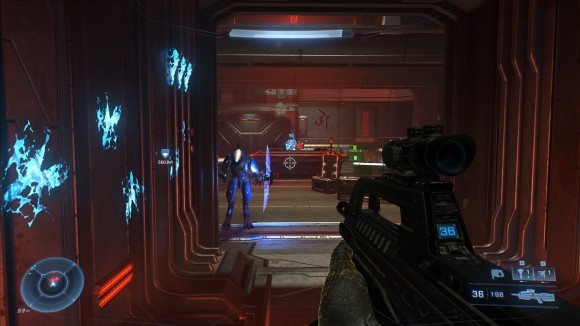
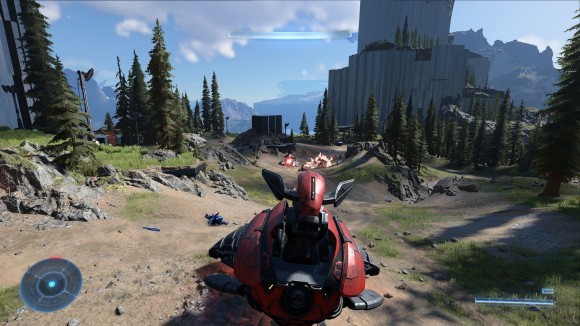
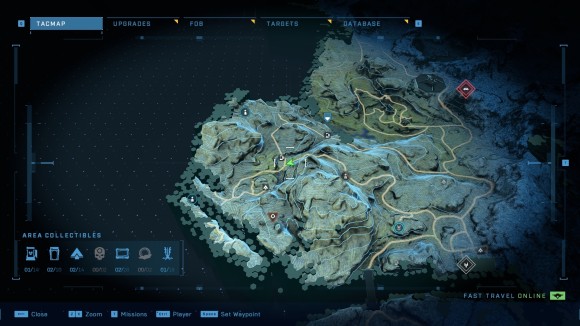
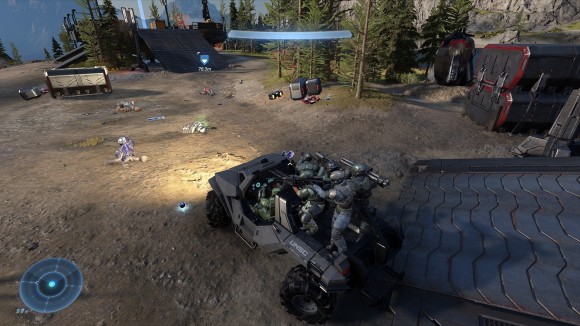
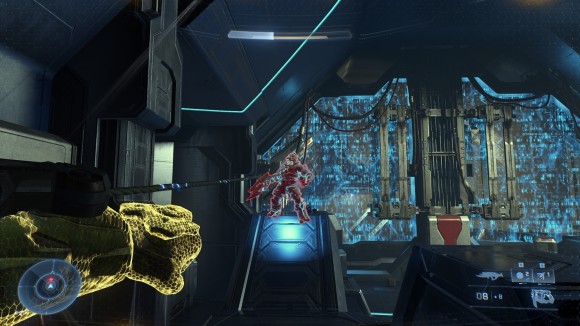
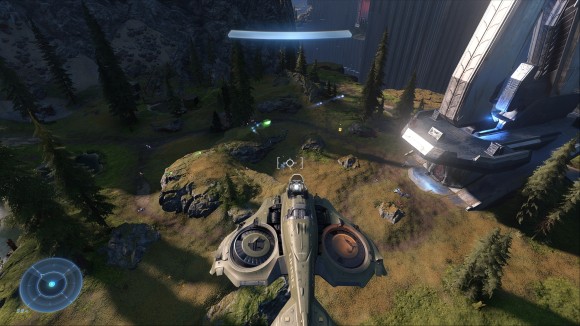
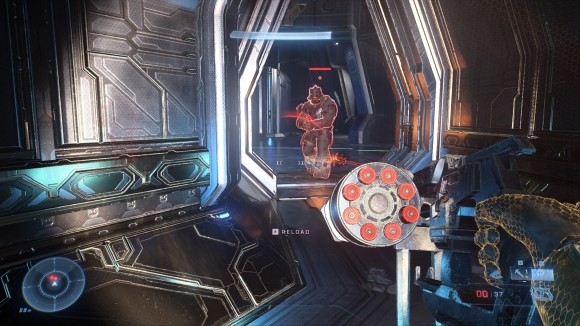
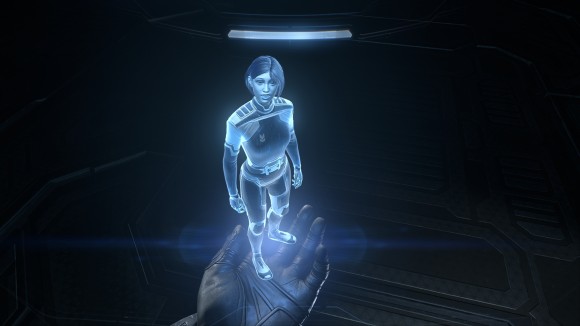
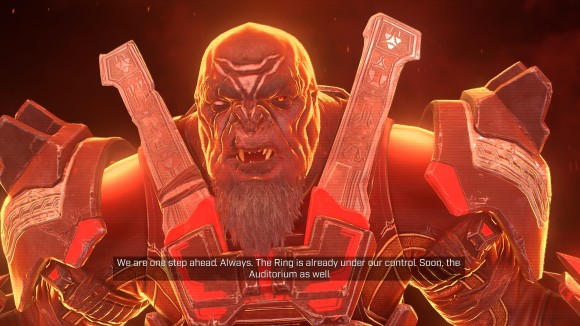
Reading that the creative lead last worked at Bungie reminds me of the recent IGN expose on Bungie. Destiny’s story is better right now than it’s ever been, and after reading that story it’s not surprising that it was such a disaster for so long. I recommend that piece.
Lovely; but I have to ask, as we approach the anniversary – is Cyberpunk2077 review ever coming? Are you steering clear of it until it’s deemed playable? Is it a name we shouldn’t bring up in these here parts? How have you managed to completely stay away from it for the last 12 months?? ????????????
(I’ve played it on Geforce Now since release, which alleviates many though not all of the issues; and double-jumping and cruising around Night City is still the most relaxing activity after kids and work are semi-put to bed and before they each wake up screaming ???? )
Whopsie apologies… somehow the text field transformed my emoji into madness-revealing series of question marks… that was not the intent :-<